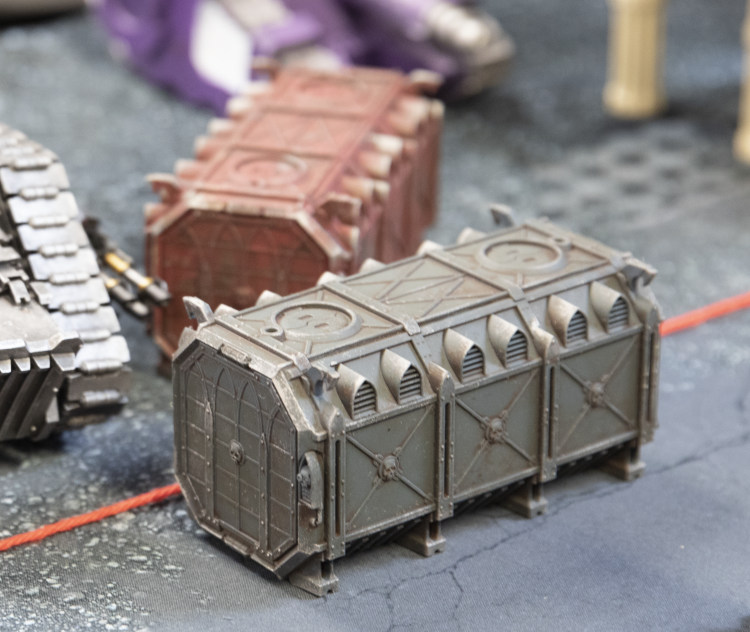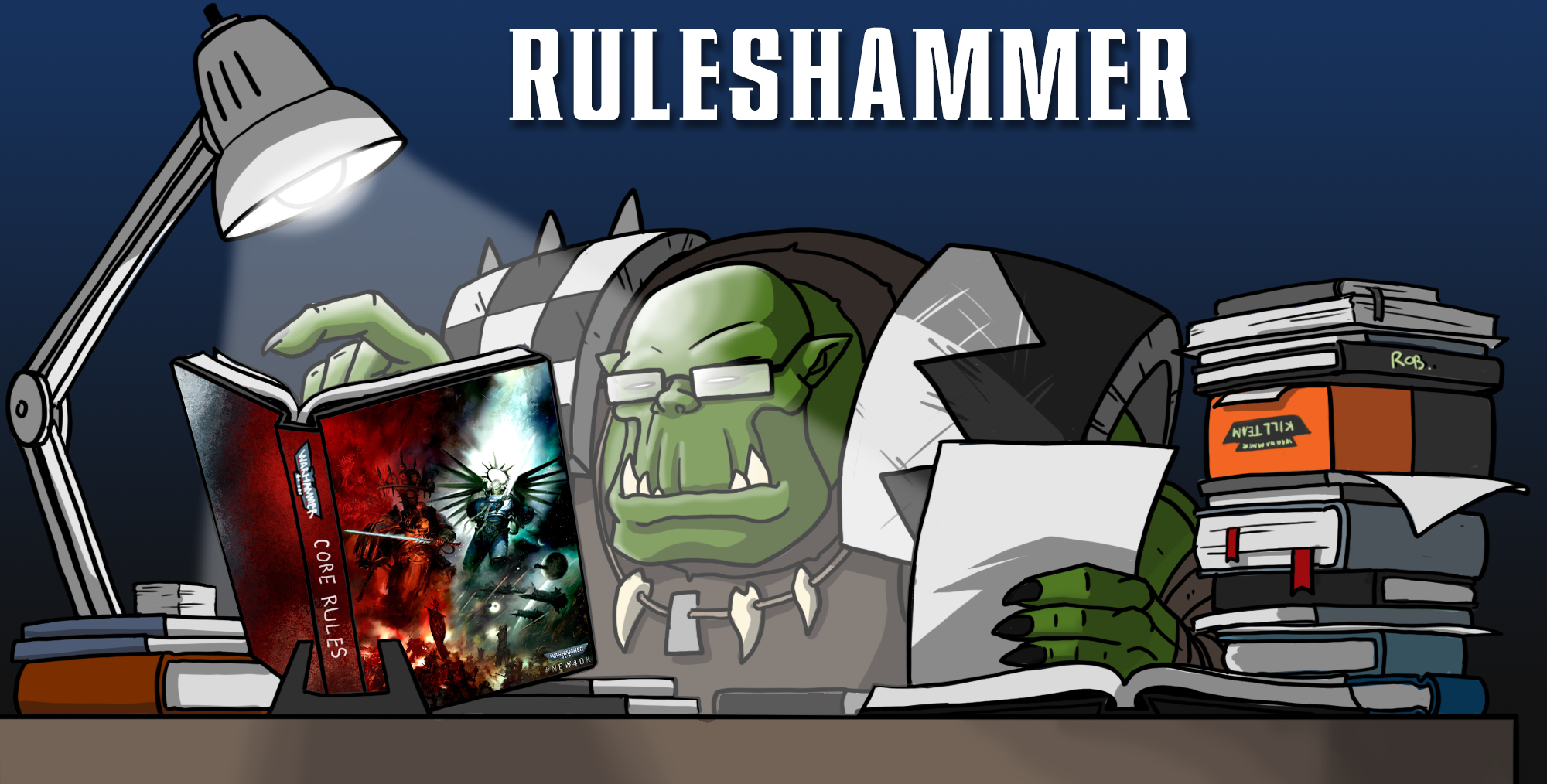Kill Team 2021 releases next week with an all-new rulebook. It’s a massive shake-up of the game with entirely new rules for Line of Sight like nothing ever used in Kill Team or Warhammer 40k before. So to ease into the new edition I’ve prepared a few more examples than what’s in the Kill Team Core book, (though I obviously am very happy to see how much is diagrammed in there already). Expect to see more Ruleshammer Kill Team content going forward for this new edition! Feel free to send in questions for Kill Team via the usual form!
Checking Line of Sight
Checking Orders
Checking for Line Of Sight is one of the most fundamental parts of this this game and some parts of the rules for determining line of sight will be familiar to 40k players while others will not. The first thing you need to know is what Order the prospective target has currently been issues – either Engage or Conceal. One interesting aspect of Kill Team’s design is that orders only change when a model (or operative) is activated, so an operative can spend most of a round (I’m not writing “turning point” over and over) with one order active on them, only to switch to the other as one of the later activations in the round. Bear in mind though: That operative is then stuck with that order until the next time it’s activated. This adds a lot of strategy to when you activate certain operatives.
So here’s how visibility works, depending on the Order currently issued to an operative. In order to see a target:
- Engage Order operatives must be Visible AND Not Obscured
- Conceal Order operatives must be Visible AND Not Obscured AND Not in Cover
Frustratingly there’s some logical negatives here that can make things a bit confusing; the basic concept here is that for a Conceal unit to be considered as within Line of Sight (i.e. a viable target), it can neither be Obscured nor in Cover. Can you be Obscured without being in cover? Yes – an operative that is more than O from a terrain feature that is Obscuring (Heavy terrain has this trait) can count as being Obscured if the firing operative is more than ▲ from the feature – see below for more on this.

Defining Visible, Obscured and Cover
We’ve used a lot of terms so far; the book has pretty clear definitions on them.
Visible: You can draw an imaginary, unobstructed straight line (known as a visibility line) 1mm wide from the head of the operative miniature to any part of the miniature of the intended target (not its base).
Obscured: The intended target is more than 2″ from a point at which a cover line crosses a terrain feature that is Obscuring. However if the active operative is within 1″ of a point at which a Cover Line crosses a terrain feature that is Obscuring, that part of the terrain features is not treated as Obscuring.
Cover: The Intended target is more than 2″ from the active operative AND The intended target is within 1″ of a point at which a Cover Line Crosses another operative’s base or a terrain features that provides cover.
The only missing definition here, a bit deeper in is what a cover line is.
To establish cover lines, the active operative’s controlling player draws imaginary straight lines, 1mm wide, from any point on the active operatives base to every part of the intended target’s base.
The diagram in the book makes this clear that “every part” means “the face of the base facing the model”… without the diagram this would be a bit vague, similar Dense Cover in 40k.
Some Line of Sight Examples
Cover from another Model
Being Careful with Heavy Cover Trait (Obscuring)
This is not an exhaustive break down of Line of Sight in kill team, but these are a few of the more subtle interactions I spotted for now, this article will be updated based on the Kill Team Line Of Sight questions I receive!
Have any questions or feedback? Got a rules question you want answered? Drop us a note in the comments below, ask a question in our Ruleshammer form, or head over to r/ruleshammer to discuss.







